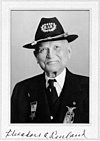Contents
The Grand Army of the Republic (GAR) was a fraternal organization composed of veterans of the Union Army, U.S. Navy, U.S. Marines and U.S. Revenue Cutter Service who served in the American Civil War. Founded on April 6, 1866 in Springfield, Illinois on the principles of "Fraternity, Charity and Loyalty" by Benjamin F. Stephenson, it was dissolved in 1956 when its last member died.
Linking men through their experience of the war, the GAR became among the first organized advocacy group in American politics, supporting voting rights for black veterans, lobbying the US Congress to establish veterans' pensions, and supporting Republican political candidates. Its peak membership, at more than 400,000, was in 1890. It was succeeded by the Sons of Union Veterans of the Civil War (SUVCW), composed of male descendants of Union veterans.
The GAR initially grew and prospered as a de facto political arm of the Republican Party during the heated political contests of the Reconstruction era. The commemoration of Union veterans, black and white, immediately became entwined with partisan politics. When the Republican Party's commitment to reform in the South gradually decreased, the GAR's mission became ill-defined and the organization floundered. The GAR almost disappeared in the early 1870s, and many divisions ceased to exist.
In the 1880s, the organization revived under new leadership that provided a platform for renewed growth, by advocating federal pensions for veterans. As the organization revived, black veterans joined in significant numbers and organized local posts. The national organization, however, failed to press the case for pensions for black soldiers. Most black troops never received any pension or remuneration for wounds incurred during their service.[1]
The GAR was organized into "Departments" at the state level and "Posts" at the community level, and military-style uniforms were worn by its members. There were posts in every state in the U.S., and several posts overseas.[1]
Commanders-in-Chief were elected by the membership at the National Encampments for one year terms. Several Commanders-in-Chief were re-elected for additional terms.
Grand Army of the Republic commanders-in chief
| Image | Name | Term start | Term end | Home department |
Notes |
|---|---|---|---|---|---|
 |
Benjamin F. Stephenson | 1866 | 1866 | Illinois | Founder and provisional Commander-in-Chief, April 6-November 21, 1866. |
 |
Stephen Augustus Hurlbut | 1866 | 1868 | Illinois | |
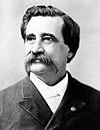 |
John Alexander Logan | 1868 | 1871 | Illinois | Issued General Order No. 11 on May 5, 1868 designating Decoration Day as May 30. It ultimately became a national holiday and today is known as Memorial Day, the final Monday in the month of May. |
 |
Ambrose Everett Burnside | 1871 | 1873 | Rhode Island | |
 |
Charles Devens | 1873 | 1875 | Massachusetts | |
 |
John Frederick Hartranft | 1875 | 1877 | Pennsylvania | |
 |
John Cleveland Robinson | 1877 | 1879 | New York | |
 |
William Earnshaw | 1879 | 1880 | Ohio | |
 |
Louis Wagner | 1880 | 1881 | Pennsylvania | |
 |
George Sargent Merrill | 1881 | 1882 | Massachusetts | |
 |
Paul Vandervoort | 1882 | 1883 | Nebraska | First enlisted man to be elected Commander-in-Chief. National Woman's Relief Corps recognized as an official auxiliary to the G.A.R. during his term. |
 |
Robert Burns Beath | 1883 | 1884 | Pennsylvania | |
 |
John S. Kountz | 1884 | 1885 | Ohio | |
 |
Samuel Swinfin Burdett | 1885 | 1886 | Washington, DC | |
 |
Lucius Fairchild | 1886 | 1887 | Wisconsin | |
 |
John Patterson Rea | 1887 | 1888 | Minnesota | |
 |
William Warner | 1888 | 1889 | Missouri | |
 |
Russell Alexander Alger | 1889 | 1890 | Michigan | |
 |
Wheelock Graves Veazey | 1890 | 1891 | Vermont | Peak membership of the GAR: 409,489. |
 |
John Palmer | 1891 | 1892 | New York | |
 |
Augustus Gordon Weissert | 1892 | 1893 | Wisconsin | |
 |
John Gregory Bishop Adams | 1893 | 1894 | Massachusetts | |
 |
Thomas G. Lawler | 1894 | 1895 | Illinois | |
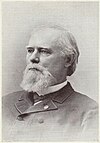 |
Ivan N. Walker | 1895 | 1896 | Indiana | |
 |
Thaddeus Stevens Clarkson | 1896 | 1897 | Nebraska | |
 |
John Peter Shindel Gobin | 1897 | 1898 | Pennsylvania | |
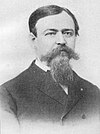 |
James Andrew Sexton | 1898 | 1899 | Illinois | Died in office, February 5, 1899. |
 |
William Christie Johnson | 1899 | 1899 | Ohio | |
 |
Albert Duane Shaw | 1899 | 1900 | New York | |
 |
Leo Rassieur | 1900 | 1901 | Missouri | |
 |
Eliakim "Ell" Torrance | 1901 | 1902 | Minnesota | |
 |
John Charles Black | 1903 | 1904 | Illinois | |
 |
Wilmon Whilldin Blackmar | 1904 | 1905 | Massachusetts | Died in office, July 19, 1905. |
| John Rigdon King | 1905 | 1905 | Maryland | ||
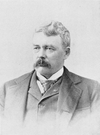 |
James R. Tanner | 1905 | 1906 | New York | |
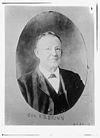 |
Robert Burns Brown | 1906 | 1907 | Ohio | |
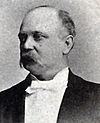
|
Charles Germman Burton | 1907 | 1908 | Missouri | |

|
Henry Martin Nevius | 1908 | 1909 | New Jersey | |
 |
Samuel Rinnah Van Sant | 1909 | 1910 | Minnesota | |
 |
John Edward Gilman | 1910 | 1911 | Massachusetts | |
| Harvey Marion Trimble | 1911 | 1912 | Illinois | ||
 |
Alfred Bishop Beers | 1912 | 1913 | Connecticut | |
 |
Washington Gardner | 1913 | 1914 | Michigan | |
 |
David James Palmer | 1914 | 1915 | Iowa | |
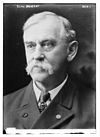 |
Elias Riggs Monfort | 1915 | 1916 | Ohio | |
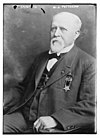 |
William James Patterson | 1916 | 1917 | Pennsylvania | |
| Orlando Allen Somers | 1917 | 1918 | Indiana | ||
 |
Clarendon E. Adams | 1918 | 1919 | Nebraska | |
| James David Bell | 1919 | 1920 | New York | Died in office, November 1, 1919. | |
| Daniel Munson Hall | 1920 | 1920 | Ohio | ||
| William Alexander Ketcham | 1920 | 1921 | Indiana | ||
| Lewis Stephen Pilcher | 1921 | 1922 | New York | ||
 |
James William Willett | 1922 | 1923 | Iowa | |
 |
Gaylord Miller Saltzgaber | 1923 | 1924 | Ohio | |
| Louis Frederick Arensberg | 1924 | 1925 | Iowa | ||
| John Baptist Inman | 1925 | 1926 | Illinois | ||
| Francis Augustin "Frank" Walsh | 1926 | 1927 | Wisconsin | ||
| Elbridge Lafayette Hawk | 1927 | 1928 | California | ||
| John Reese | 1928 | 1929 | Nebraska | ||
| Edwin J. Foster | 1929 | 1930 | Massachusetts | ||
| James E. Jewel | 1930 | 1931 | Colorado | ||
| Samuel P. Town | 1931 | 1932 | Pennsylvania | ||
| William Parkinson Wright | 1932 | 1933 | Illinois | Died in office, June 15, 1933. | |
| Russell C. Martin | 1933 | 1934 | California | ||
| Alfred Edwin Stacey | 1934 | 1935 | New York | ||
 |
Oley Nelson | 1935 | 1936 | Iowa | |
 |
Carl Henry William Ruhe | 1936 | 1937 | Pennsylvania | |
| Overton H. Mennet | 1937 | 1938 | California | ||
| Robert McKee Rownd | 1938 | 1939 | New York | ||
| John E. Andrew | 1940 | 1940 | Illinois | Died in office, June 30, 1940. | |
| Alexander T. Anderson | 1940 | 1940 | Pennsylvania | ||
| William Washington Nixon | 1940 | 1941 | Kansas | ||
| George Alvin Gay | 1941 | 1942 | New Hampshire | ||
| John Simon Dumser | 1942 | 1943 | California | ||
| George H. Jones | 1943 | 1944 | Maine | ||
| Isaac W. Sharp | 1944 | 1945 | Indiana | ||
| Hiram R. Gale | 1945 | 1946 | Washington | ||
| John Henry Grate | 1946 | 1947 | Ohio | ||
| Robert McKee Rownd | 1947 | 1948 | New York | ||
| Theodore A. Penland | 1948 | 1949 | Oregon | Last Commander-in-Chief. Died in office, September 13, 1950. |
Footnotes
- ^ a b "A Brief History of the Grand Army of the Republic". Grand Army of the Republic Museum and Library. Retrieved 2011-03-05.


